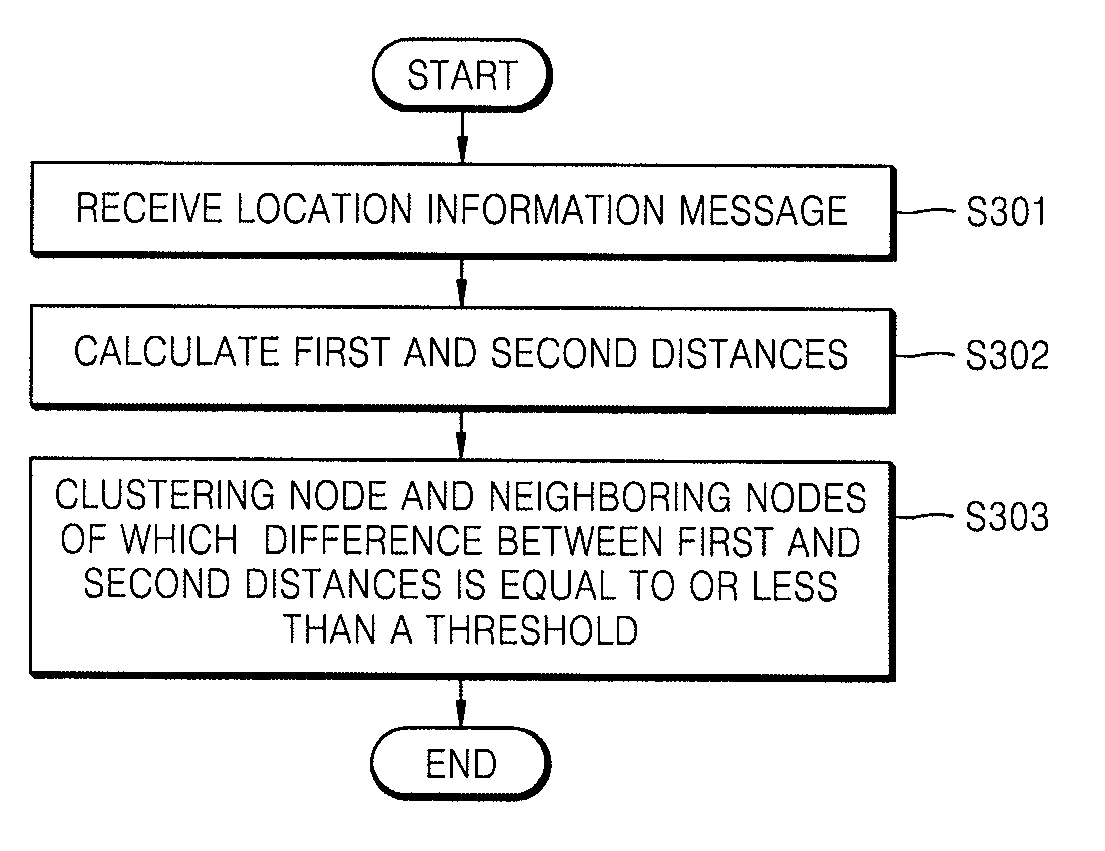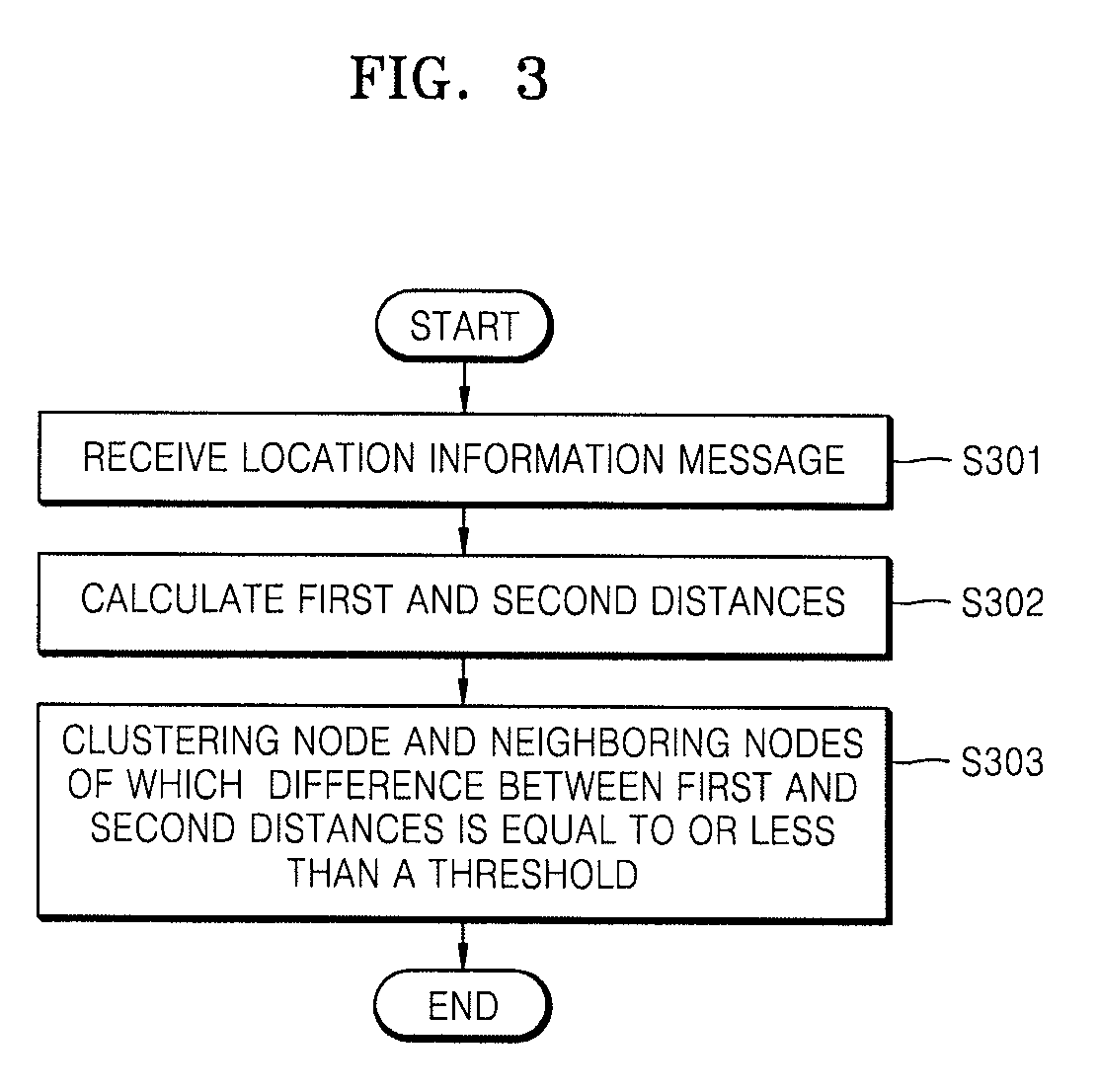Node for self localization, clustering method using the same, and localization method
a clustering method and self localization technology, applied in the field of nodes for self localization, clustering methods using the same, and localization methods, can solve the problems of difficult to secure against line of sight (los), difficult to communicate each other, and difficult to measure an accurate difference between distances. to achieve the effect of accurate localization in the cluster
- Summary
- Abstract
- Description
- Claims
- Application Information
AI Technical Summary
Benefits of technology
Problems solved by technology
Method used
Image
Examples
Embodiment Construction
[0036]Now, preferred embodiments of the present invention will be described in detail with reference to the attached drawings.
[0037]In a wireless sensor network constructed by a plurality of indoor nodes, an embodiment of the present invention includes a structure for automatically clustering nodes which recognize their own locations for localization, a structure for searching for a cluster in which a node to be localized is included, and a structure for performing triangulation in the cluster.
[0038]FIG. 1 illustrates a structure of a node for self clustering according to an embodiment of the present invention. Referring to FIG. 1, a node 100 includes a location information messaging unit 110, a distance calculator 120, a clustering unit 130, and a broadcasting unit 140.
[0039]A sensor network is constructed by disposing the node 100 in a specific space. At least one node exists in the sensor network.
[0040]The location information messaging unit 110 receives messages including the in...
PUM
 Login to view more
Login to view more Abstract
Description
Claims
Application Information
 Login to view more
Login to view more - R&D Engineer
- R&D Manager
- IP Professional
- Industry Leading Data Capabilities
- Powerful AI technology
- Patent DNA Extraction
Browse by: Latest US Patents, China's latest patents, Technical Efficacy Thesaurus, Application Domain, Technology Topic.
© 2024 PatSnap. All rights reserved.Legal|Privacy policy|Modern Slavery Act Transparency Statement|Sitemap



